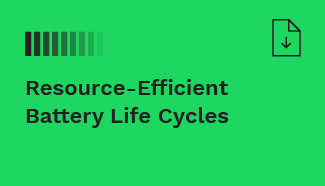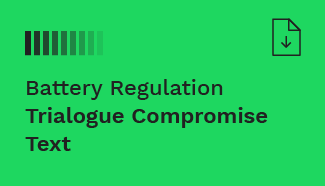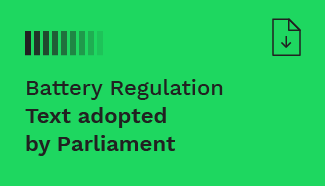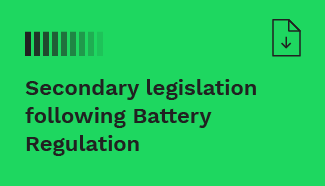
materials

Interested in further details?
Read through our selection of publications and reports around the Battery Passport
publications
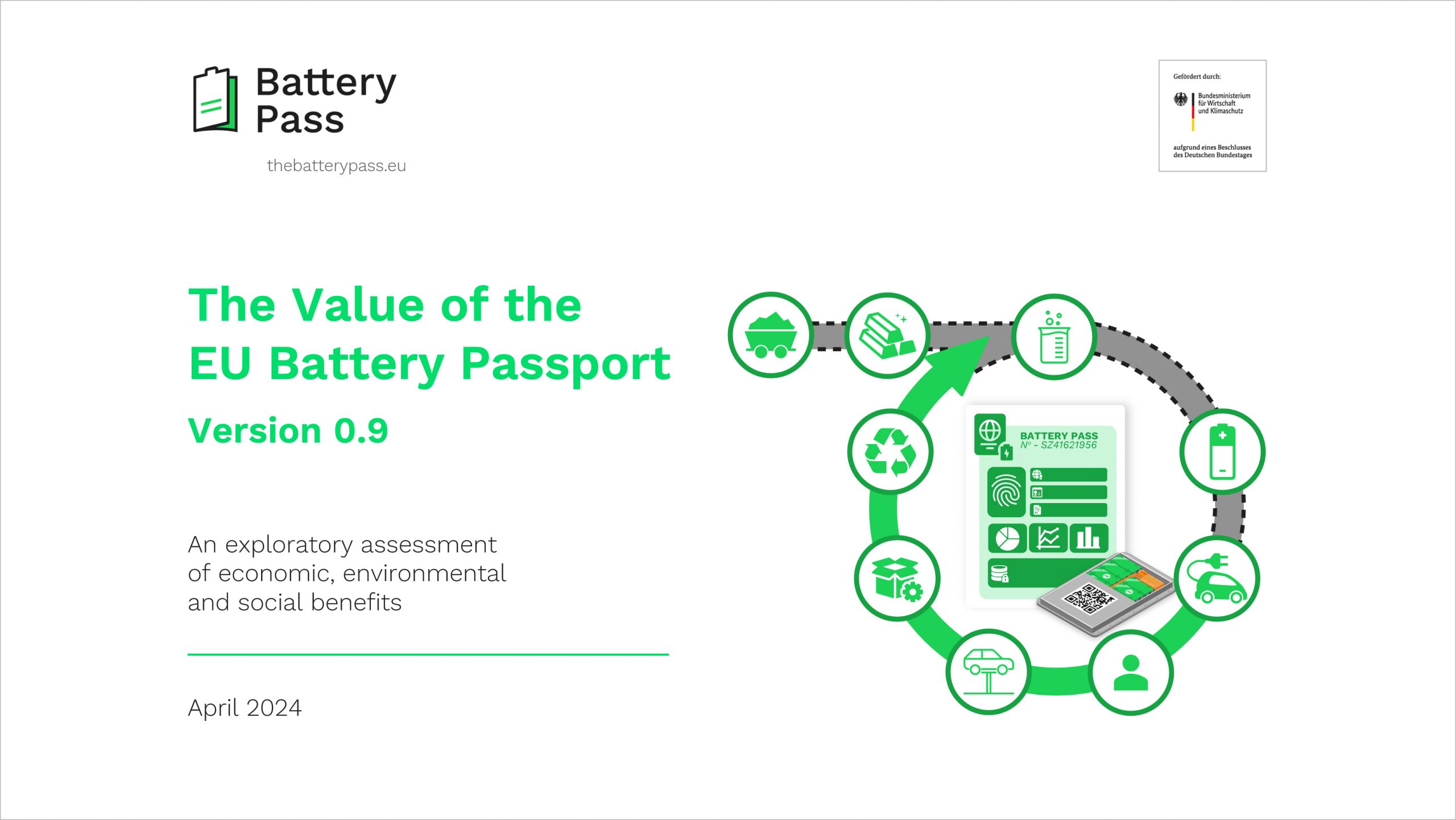
Value Assessment
Showcasing the value of the EU battery passport
This document establishes a qualitative and quantitative analysis of the battery passport’s economic, environmental, and social benefits across the value chain. It also describes challenges that stakeholders are likely to face when creating, maintaining, or using the battery passport.
Technical Guidance and software demonstrator for the EU Battery Passport
Technical Guidance
Software Demonstrator
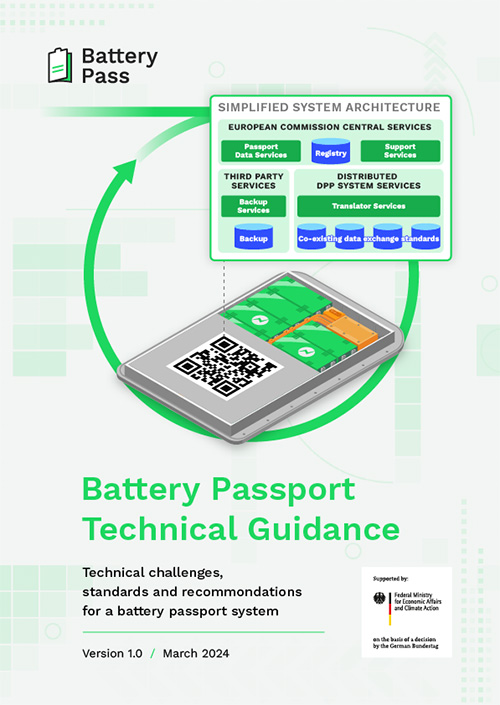
Technical Guidance
This document provides a comprehensive overview of the technical challenges and standards for the battery passport system. Critically, it also presents guidelines to help your organisation prepare for your participation in the battery passport ecosystem.
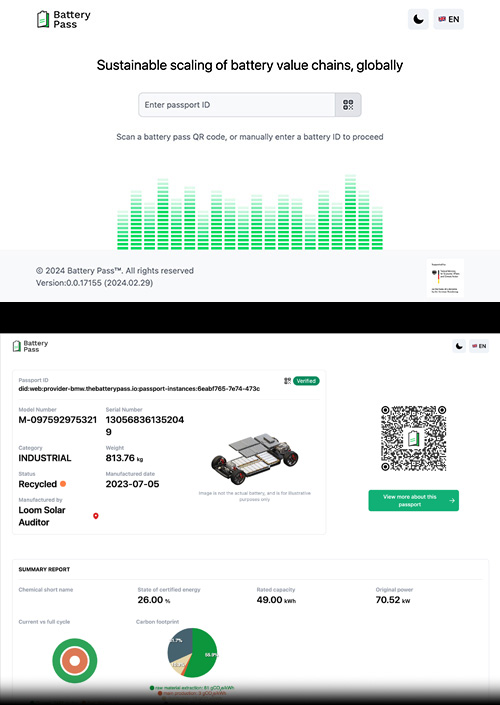
Software Demonstrator
The software demonstrator brings the concept of the battery passport through the entire lifecycle to life for the first time. It also tests the technical feasibility of a digital product passport system.
Technical Guidance and software demonstrator for the EU Battery Passport
Technical Guidance
This document provides a comprehensive overview of the technical challenges and standards for the battery passport system. Critically, it also presents guidelines to help your organisation prepare for your participation in the battery passport ecosystem.
Software Demonstrator
The software demonstrator brings the concept of the battery passport through the entire lifecycle to life for the first time. It also tests the technical feasibility of a digital product passport system.
Battery Passport Content Guidance
Achieving compliance with the EU Battery Regulation and increasing sustainability and circularity.
Main Content Guidance
Carbon footprint specific documents
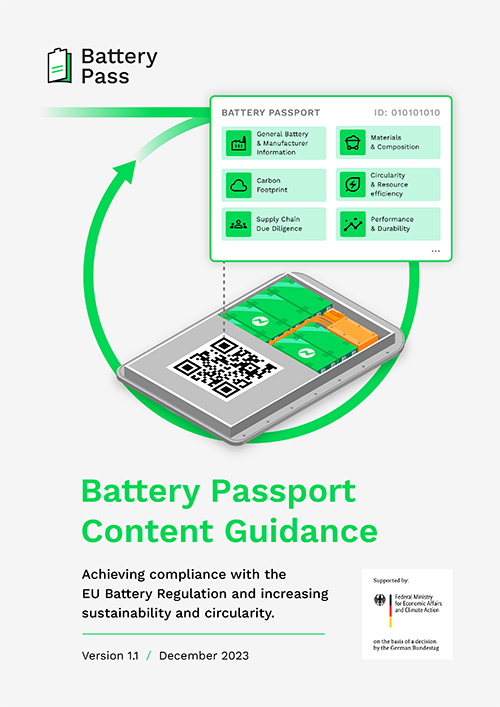
Main Content Guidance
This document provides a detailed perspective on the battery passport content reporting requirements as per the EU Battery Regulation and beyond. It is the first publicly available comprehensive aggregation and interpretation allowing economic operators and other battery value chain players to prepare for the battery passport implementation.
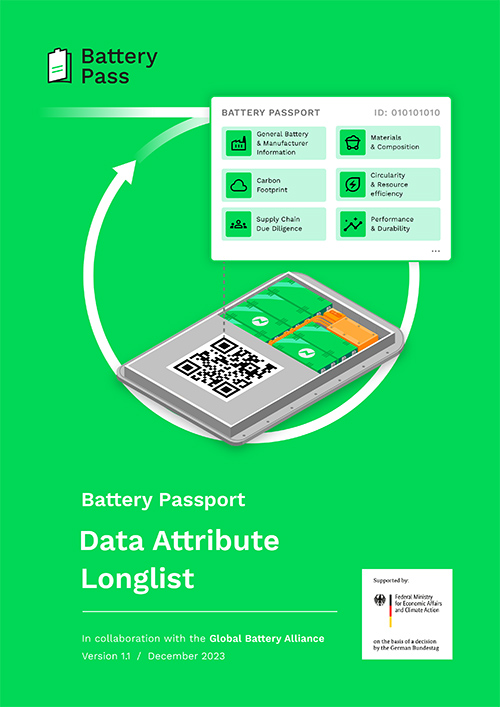
Data Attribute Longlist
The data attribute longlist includes all data attributes required (and suggested) for the battery passport alongside definitions as well as further relevant data dimensions. This overview can serve as a first basis for and facilitates the technical demonstration and implementation of the battery passport within the own organisation.
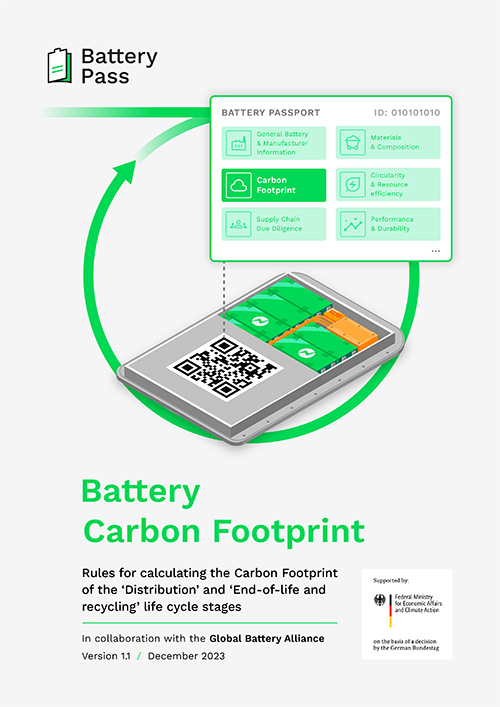
Carbon Footprint Rules
This document provides accounting rules to calculate company-specific carbon footprints of the battery ‘Distribution’ and ‘End-of-life and recycling’ life cycle stages. The rules are proposed as a complementation to the GBA GHG Rulebook, thus providing a cradle-to-grave Battery Carbon Footprint Rulebook.
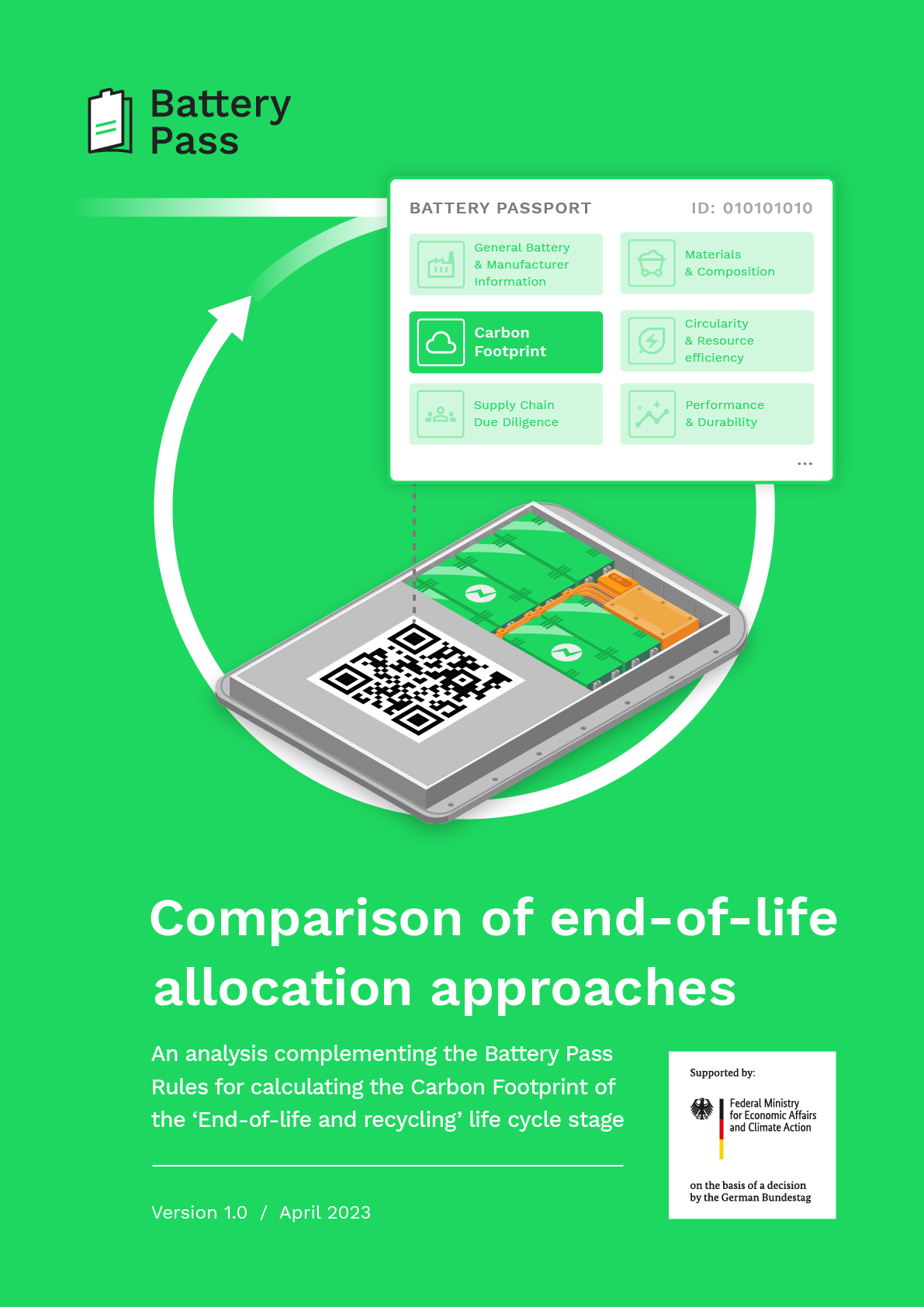
EOL Allocation Analysis
This insights report highlights the impact of the methodological choice on the carbon footprint declaration. It includes a comparative assessment of the three main end-of-life allocation approaches and their implications on the carbon footprint in the context of the EU Battery Regulation.
Battery Passport Content Guidance
Achieving compliance with the EU Battery Regulation and increasing sustainability and circularity.
Main Content Guidance
Main Content Guidance
This document provides a detailed perspective on the battery passport content reporting requirements as per the EU Battery Regulation and beyond. It is the first publicly available comprehensive aggregation and interpretation allowing economic operators and other battery value chain players to prepare for the battery passport implementation.
Data Attribute Longlist
The data attribute longlist includes all data attributes required (and suggested) for the battery passport alongside definitions as well as further relevant data dimensions. This overview can serve as a first basis for and facilitates the technical demonstration and implementation of the battery passport within the own organisation.
Carbon footprint specific documents
Carbon Footprint Rules
This document provides accounting rules to calculate company-specific carbon footprints of the battery ‘Distribution’ and ‘End-of-life and recycling’ life cycle stages. The rules are proposed as a complementation to the GBA GHG Rulebook, thus providing a cradle-to-grave Battery Carbon Footprint Rulebook.
EOL Allocation Analysis
This insights report highlights the impact of the methodological choice on the carbon footprint declaration. It includes a comparative assessment of the three main end-of-life allocation approaches and their implications on the carbon footprint in the context of the EU Battery Regulation.
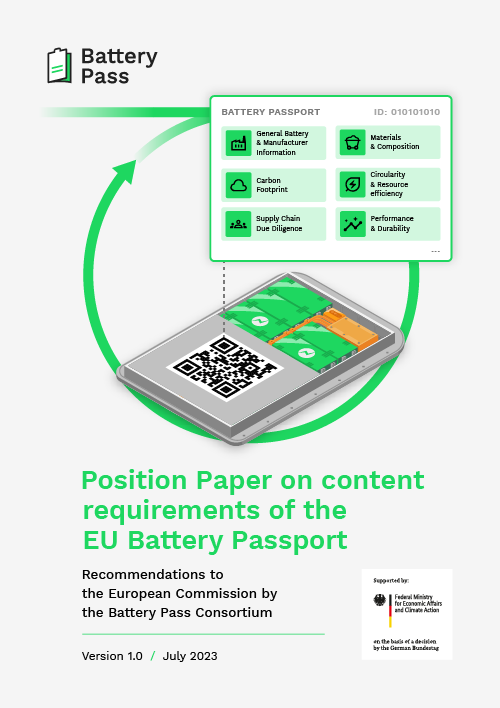
Position Paper
Content requirements of the EU Battery Passport
Recommendations to the European Commission by the Battery Pass Consortium
This document addresses clarification needs and presents recommendations by the Battery Pass consortium on battery passport content requirements as laid out in the EU Battery Regulation. It builds on our insights in the Battery Passport Content Guidance and is directed towards the European Commission incl. related institutions such as the JRC.

Technical Document
Technical Framework Specification for the Digital Product Passport System
A recommendation for standardisation of the European Digital Product Passport System (DPP-System) with particular specifics for the Battery Passport.
This document provides a comprehensive background architecture, called “Standard Stack”, which is essential to select, evaluate and elaborate standards for the technical DPP-System. It addresses the major interoperability issues and presents the elements of the Standard Stack, required for a secure, interoperable and reliable data exchange and provision across different sectors, e.g. for electrical vehicle batteries.
Communication materials


